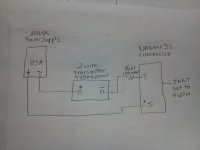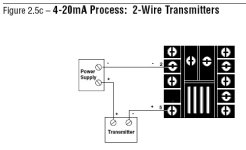Hello friends,
I have run into some issues with a process controller ( WATLOW SERIES 93 P/N 93BA1CC000AM). This controllers is set to receive 4-20mA input, the transmitter is a two wire 4-20 output (Honeywell SPTma0100PA4B). Attached is a schematic that I’m trying to figure out especially why would someone put in a 100 ohm ¼ resistor on the feedback line, it does not make any sense to me. Can anyone help out. The system has been setup like this for a while now and one of the plant electricians is telling me that they have replaced a dozen of these transmitters in the past year and a half. The pressure transmitter is reading pump discharge pressure. Can help out. Thank you in advance.

I have run into some issues with a process controller ( WATLOW SERIES 93 P/N 93BA1CC000AM). This controllers is set to receive 4-20mA input, the transmitter is a two wire 4-20 output (Honeywell SPTma0100PA4B). Attached is a schematic that I’m trying to figure out especially why would someone put in a 100 ohm ¼ resistor on the feedback line, it does not make any sense to me. Can anyone help out. The system has been setup like this for a while now and one of the plant electricians is telling me that they have replaced a dozen of these transmitters in the past year and a half. The pressure transmitter is reading pump discharge pressure. Can help out. Thank you in advance.

Last edited:







